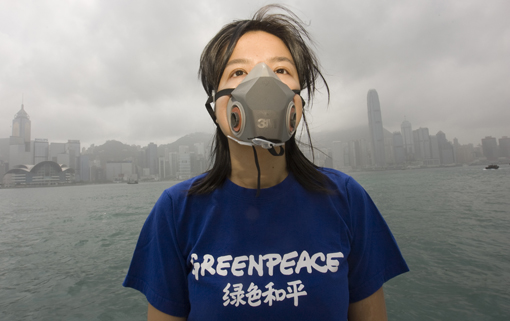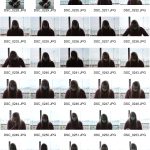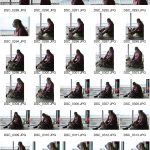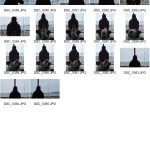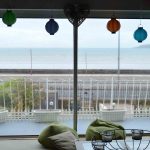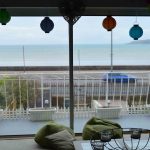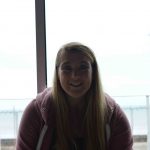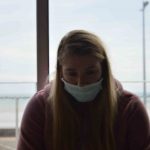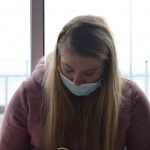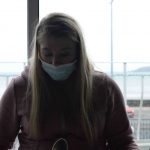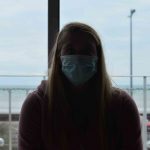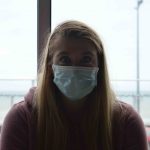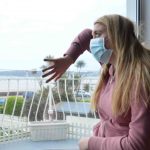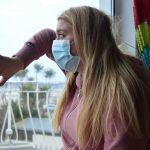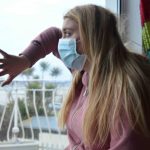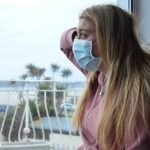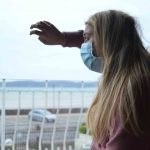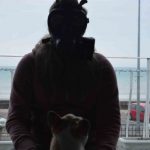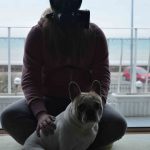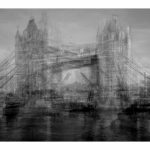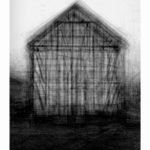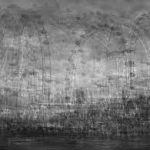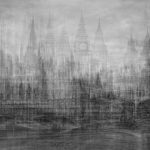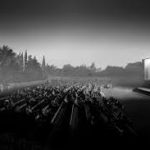Anthony Kurtz is a German environmental photographer that lives in Berlin. Most of his work is based in San Francisco and in African countries like Senegal. He specialises in environmental portraiture and strives to create beautiful and unexpected photographs of people and the spaces they occupy. Combining both natural light and studio strobes, Anthony sculpts light to create a mood, an atmosphere, a photograph that tells a story and, hopefully, sparks curiosity. Similar to Goldblatt many of Anthony’s pictures are very strong and tell a story about each individual that has been captured in his images. I particularly like the clarity and quality of his images. This is because they are very sharp and make the detail of the images very clear. Lastly I like the work that Kurtz has done because many of the models in his shoots are kinky looking, for example some of his images show people wearing strange glasses or having strange props, such as a mouse.
Monthly Archives: March 2017
Filters
Practice Shoot
My exam is based on the high levels of pollution in China in which on a daily basis, have to wear mouth masks to help filter the toxic air. I have taken this to the extreme in which i will be creating multiple sequences of photos which the first photo will be my model happy in a beautiful environment, the second photo will be my model wearing a mouth mask and the third will be my model wearing a gas mask in a beautiful environment. The photos will slowly get darker and the last image will be a dark black and white photo to create drama.
I did a specification for my shoot previously in which i stated that i will do this shoot on Victoria Avenue beach and People’s Park. However due to weather conditions i was unable to do so which is why i did a practice shoot indoors using all the equipment necessary. I took some photos free hand, using a tripod and i used a timer due to the slow shutter speed i was using for most of my images.
This shoot was mainly for me to practice with Aperture and Shutter speed as i am not very skilled with them. I chose to photograph against the light as it is more difficult so required work with Aperture and shutter speed. Also i could not photograph in any other place as i had furniture and it is dark in the rest of my house so i was limited to what i could do. However, i do understand that they are not well composed and i will not be using these in my project, they were simply for me to get to grips with photographing with the mouth mask and gas mask. The pole in the middle of the window was difficult to work around but i was not concentrating this as i wanted to create a sharp and crisp image before i start thinking about composition.
All of these images are experimentation as i have many of the same image so that i could see what it would look like with different apertures and shutter speeds. This is also why i practiced using a tripod and self-timer.
These are the beginning images of my experimentation:
As you can clearly see, i was experimenting with aperture and shutter speed to see what i would need to do. This is also when i started using a Tripod because i was reducing the shutter speed and need to keep the camera still and level. I did this so that when i am outside, i will not spend a long time setting up as i now understand aperture and shutter.
Mouth Mask experiments:
As you can see, i was experimenting with both aperture and shutter speed as i was still using a tripod. I wanted to understand how they both worked so that my model did not have to spend very long in this mask as it is not the most comfortable thing to wear and it does restrict breathing slightly. So i had a limited amount of time as the light was fading and i did not want her to be in the mask for a long period of time. After this series of experiments, i will be able to set up my camera with the correct settings for a sharp and crisp image for my official shoots on Friday 24th March. I also tried adjusting the ISO but this made the image much darker so i left it on 100.
Experiments with self-timer:
Many of these photos are blurry as i could not get the self-timer to get a focused image but the last three in this gallery are clear and they are sharp and vivid which is what i want when i go to my official shoots later in the week and next week.
The Sharp Photos:


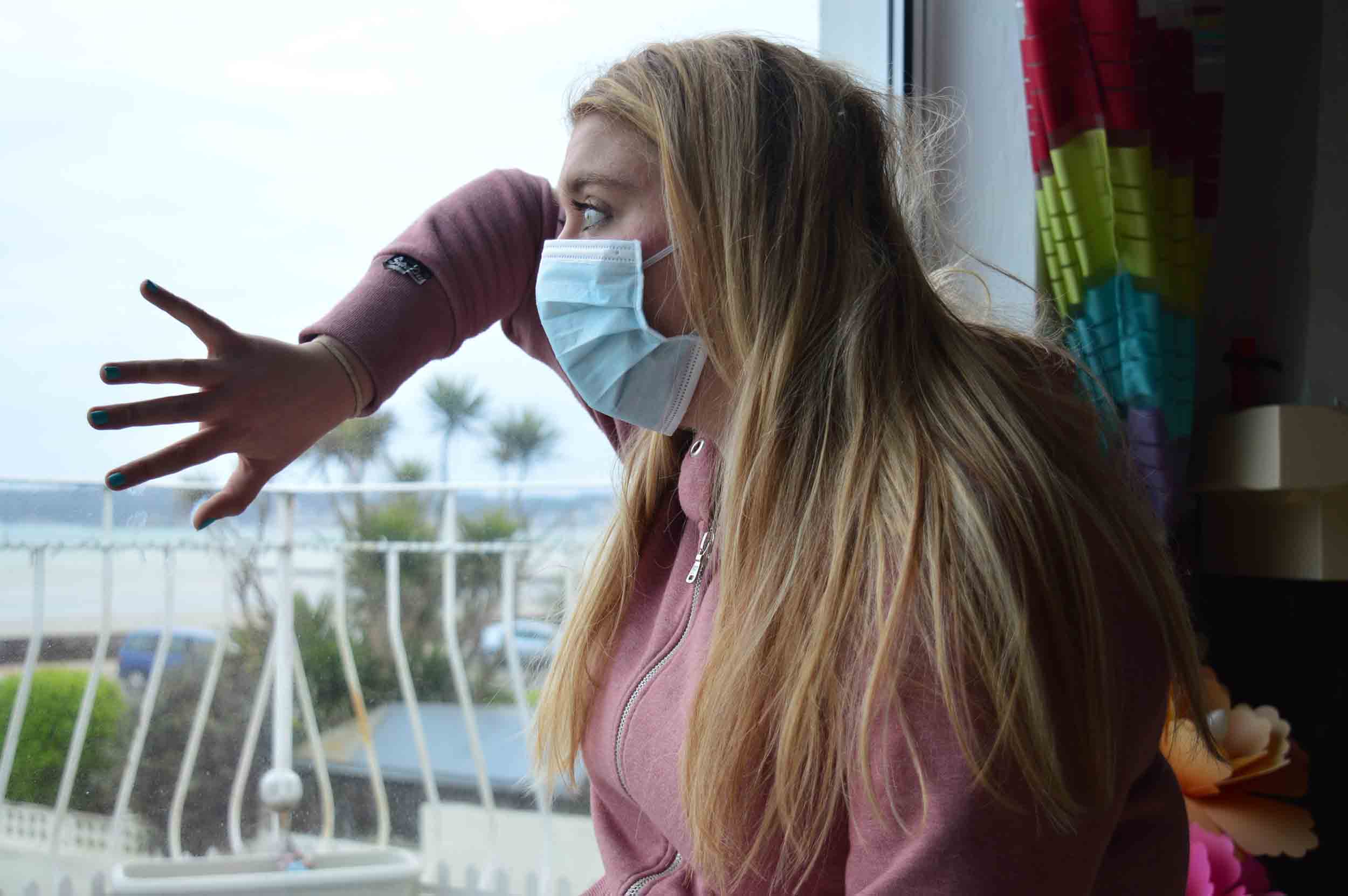
Gas Mask experimentation:
With the gas mask, i have a maximum of 20 minutes otherwise there is a risk my model could faint due to lack of oxygen. This is why i did not do these very well as i was rushing as i did not want to put her safety at risk also it is uncomfortable to wear. The light was fading at this point and i could not get the aperture right but this allowed me to understand that if the light is dark, then the mask will be very difficult to work with, but this means that i know to photograph the gas mask first if the light is fading. I understand that it did not help that the light was behind her but it has helped me learn what not to do when doing these portraits. During these i was still using the tripod and self-timer which is why many of them are blurry and it did not help that my dog kept moving and entering the picture.
Summary:
- I have learnt how aperture and shutter speed work and i am much better at setting up quickly
- I understand that the light must not be behind the model as it makes a silhouette
- I now know i will be using a tripod and most likely a self-timer to take the images
- I cannot photograph the gas mask in fading light as it makes her eyes much darker and almost invisible
- The mouth mask is easiest to photograph and i will have to find more interesting poses for the model when she is not wearing any sort of mask,
Photoshoot 1
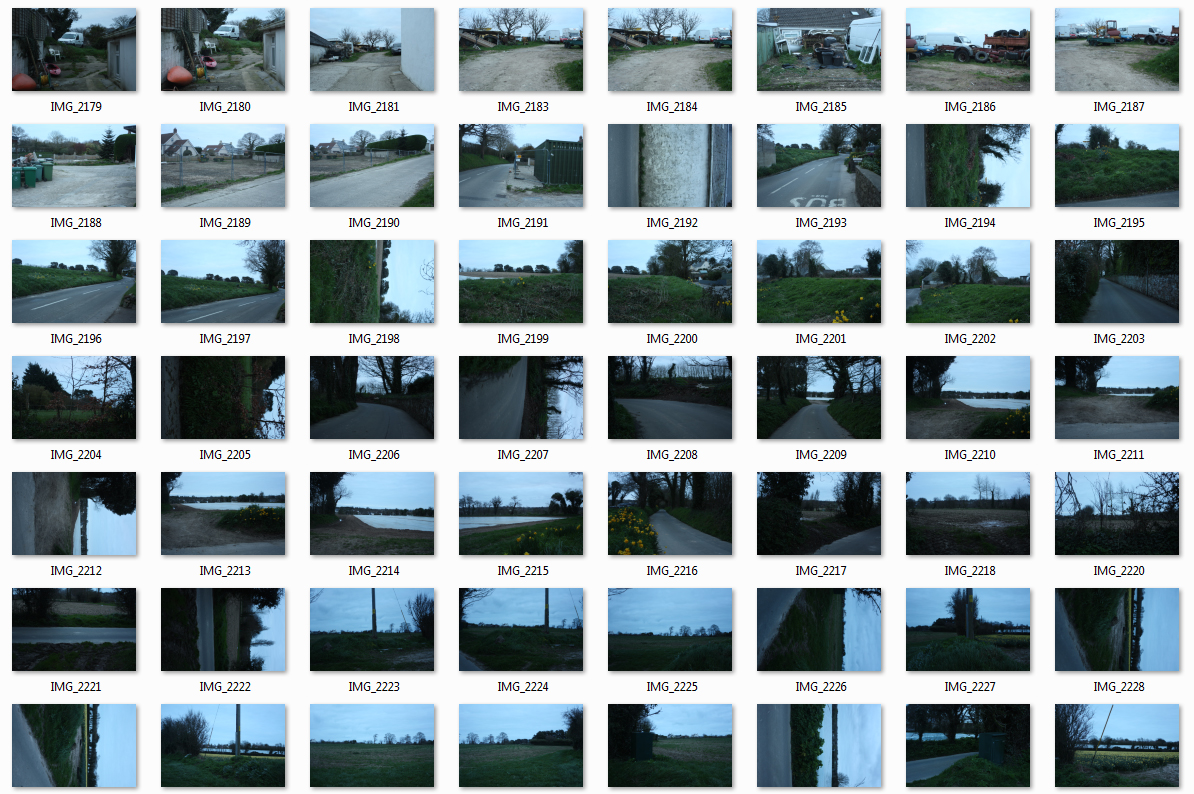
I explored the environment and area of where I lived to stat the project. This also links in to a depiction of my own environment that i am surrounded by. As I discussed in my specification, I was looking out for land and areas that showed the conflict between man made changes and the natural landscape. I picked a late time of day where the lighting was soft and natural, I didn’t use flash at all to keep the lighting as natural as possible, but with the overcast weather it made the images more flat. For my next shoot I will pick a time where the weather is sunny to evoke a brighter more intense lighting. Above is a contact sheet of the photographs. I tried a variation of landscape and portrait photographs.
In the above photographs, they were all taken in the same area, you can really get the sense of human presence in these photographs but with an eerie absence of people. I wanted to focus on roads and paths that have eroded thru ought the soil but still featuring the rich green grass growing on the sides, showing the regrowth nature creates. The overcast lighting makes the pictures appear very straight forward, leaving the viewer to focus on the physical features of the image, similar to that of a documentary image, the flat lighting stripped the photographs of any creative narrative, they work well as a series, but do not leave any mystery or sense of poetic ambiance. The photogrpah top right reminds me of the photograph by Richard Misrach ‘Abandoned Trailer’ which depicts a selection of rubbish and abandoned debris surrounding a lake. Similar to Misrach’s photograph, my photographs portrays the dramatic effects on the land caused by society. I brought the highlight levels down to bring out the texture in the sky as well as evoke a more eerie ambiance similar to that in the work of Richard Misrach.

In the above photographs I wanted to look at the harsh difference between the smooth road and the rural landscape. The above photographs work well as a series as well as evoke a narrative of travel, where the viewer follows the photographer’s journey.
The above photographs all share a romantic influence such as with the use of flowers in the last two photographs and the focus on vast landscapes. Similar to the first few photographs, there isn’t really a narrative evoked in these photographs, the photos focus on the more obvious features as opposed to a deeper narrative and meaning.
I tried a selection of very straightforward compositions that allowed for lost of information and captures the whole landscape. I used the rule of thirds such as in the first photograph above, the electricity box if focused in the third section of the photograph. I have also placed the horizon in the centre, making the photograph more straightforward similar to the genre of new topographic, which is often described to have a very formal or banal aesthetic.
The photos above show a slightly romantic influence with the use of flowers. I like the influence of people in these photographs, the tractor marks in the mud and the boxes reflects the agricultural side, the flowers add a very poetic influence. These are my favourite photographs of this shoot for the juxtaposition and connotations between the mud, which shares negative connotations of dirtiness and unpleasantness and flowers which share positive connotations such as passion and beauty.
Experiment with Photoshop
Idris Khan: http://www.saatchigallery.com/artists/idris_khan.htm
It is hard to avoid the aspect of time when producing what ones sees as o photograph… my images are something that is not a frozen moment, but an image made up of many moments and that is created over time rather than taken.
He is a British artist who is based in London. His works draws from a diverse range of cultural sources such as art, music and history and he creates densely layered imagery. His work is both abstract, figurative and addresses narratives of history, cumulative experience and metaphysical collapse of time into single moments.
I have done an experiment to replicate his work using images from my previous project for A2. I chose a simple image of a chair and layered it 10 times and blended the image as well. It is not as densely packed as Idris Khan’s work however it is what an image of his would look like before completion.
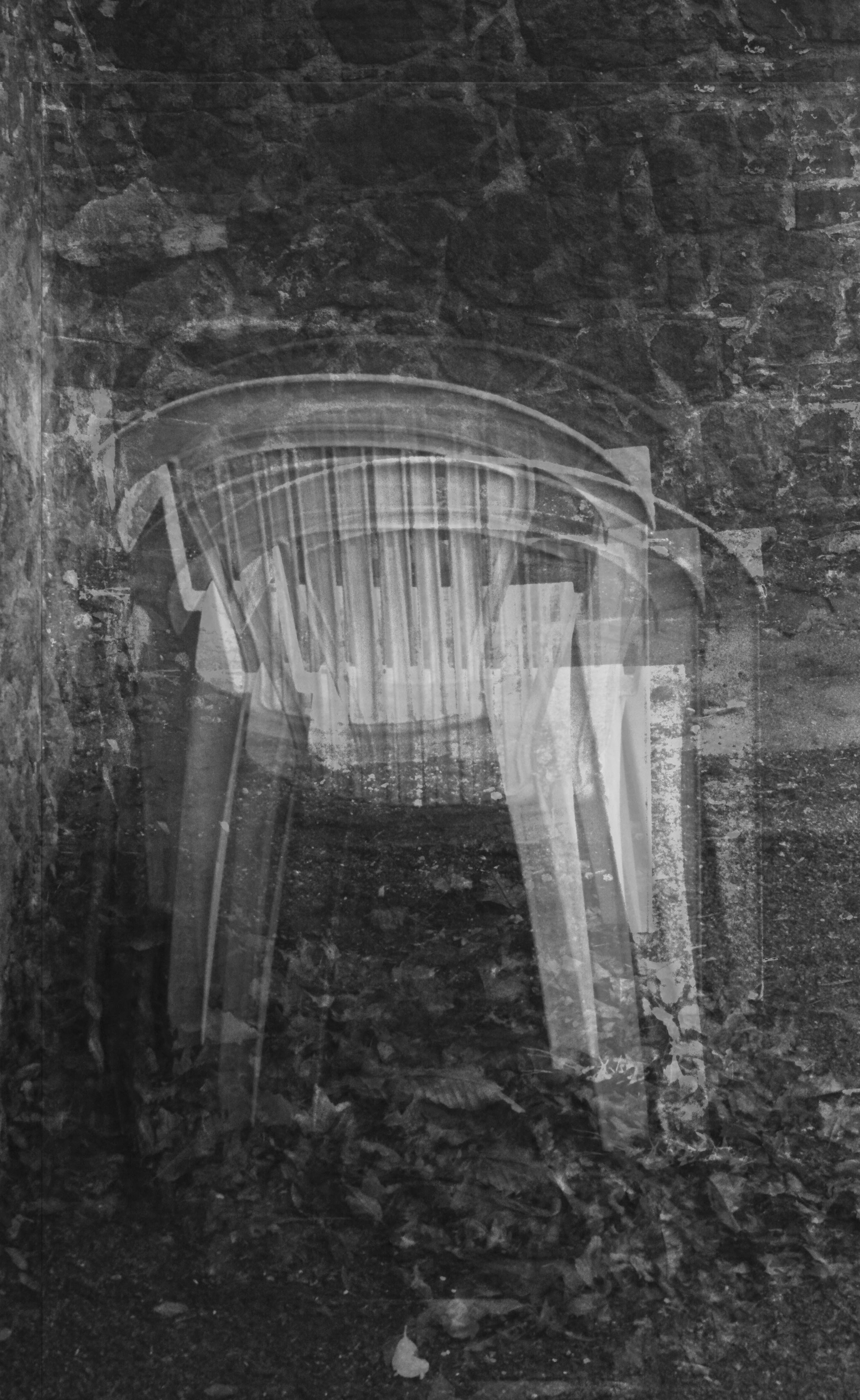
Tanja Deman: http://www.tanja-deman.com/
She is a Croatian artist, her work is inspired by her interest in the perception of space, physical and emotional connection to a place and her relationship to nature.
She works by incorporating photography, collage, video and public art to create evocative meditations on urban space and landscape.
I have done an experiment using inspiration from Tanja Deman who photo shops different environments together. My experiment was based on the photos from my personal study on the Jersey Lunatic Asylum. I used a photo of the back of the building and a photo of a single chair. I did this using layers, blending and the paint tool, i also adjusted the opacity to make it seem like a ghost chair.
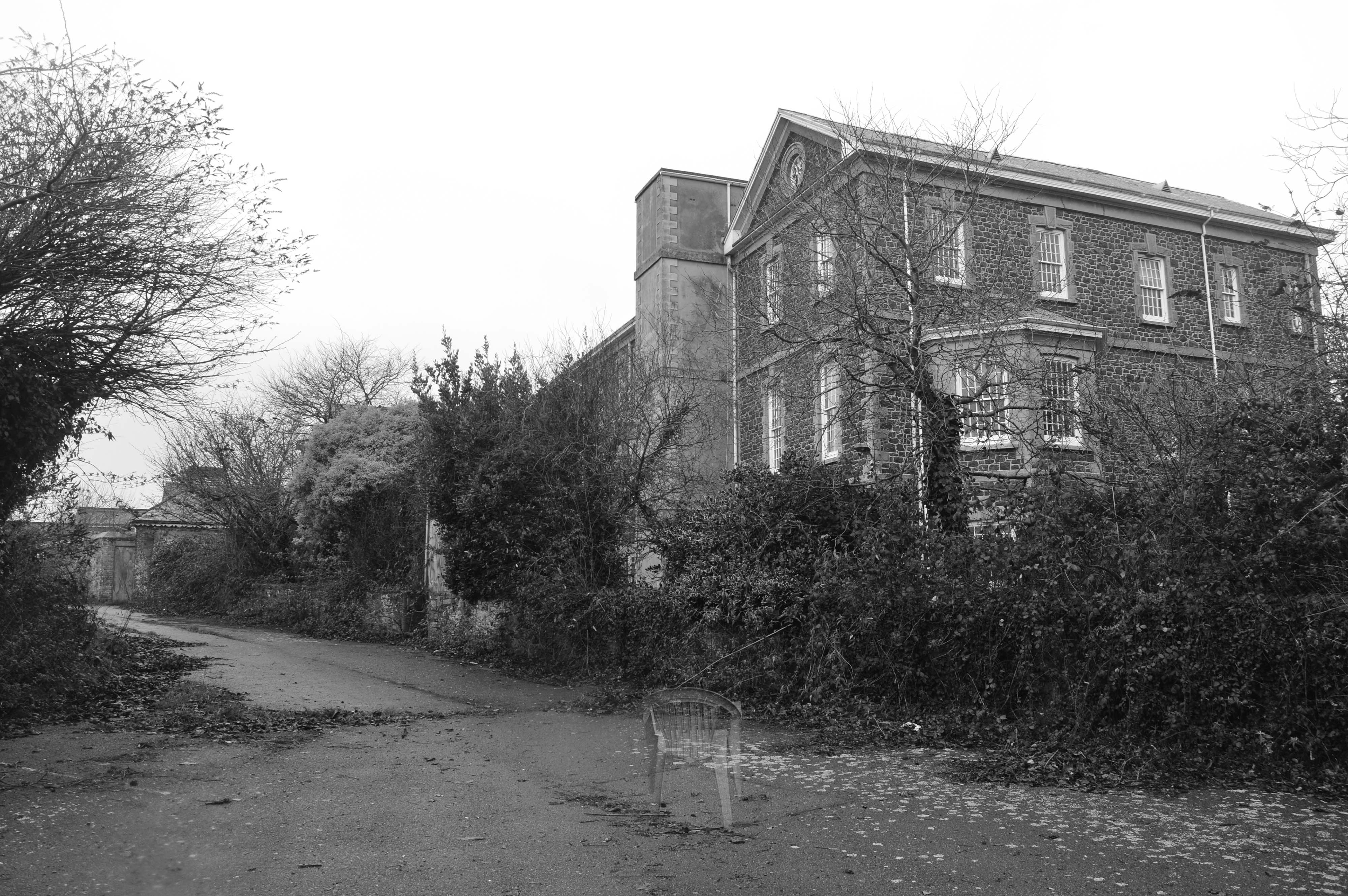
Contextual Research: Land/Environmental Art




Write a Specification
Assessment Objectives A2 Photography: (Edexcel)
AO1 – Develop your ideas through sustained and focused investigations informed by contextual and other sources, demonstrating analytical and critical understanding.
To achieve an A or A*-grade you must demonstrate an Exceptional ability (Level 6) through sustained and focused investigations achieving 16-18 marks out of 18.
Get yourself familiar with the assessment grid here:
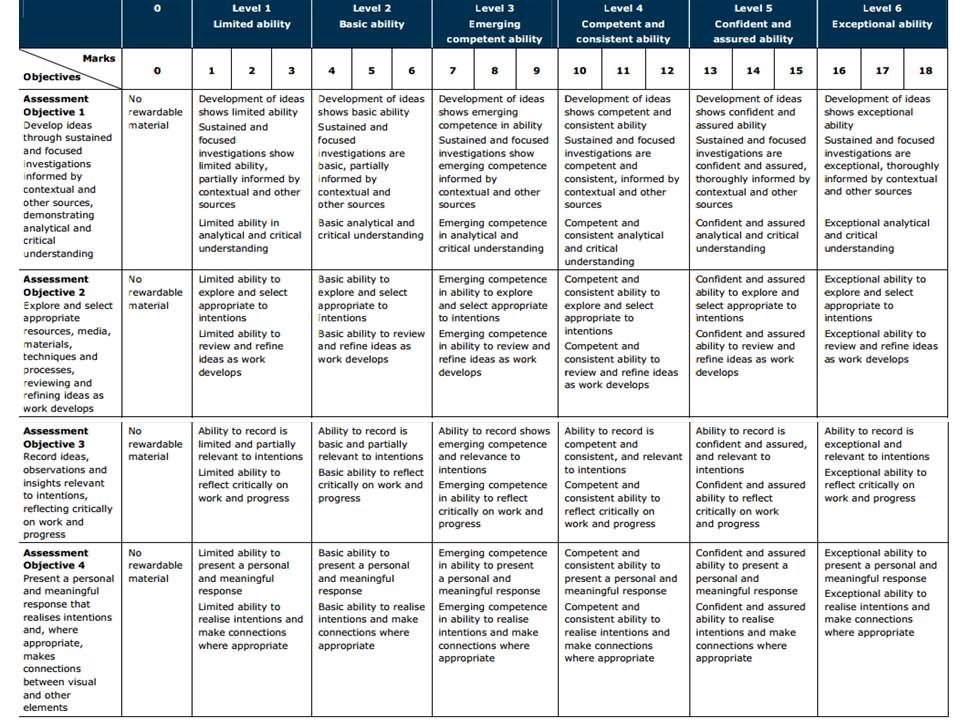
To develop your ideas further from initial research of mind-maps and mood-boards on the theme ENVIRONMENT you need to be looking at the work of others (artists, photographers, filmmakers, writers, theoreticians, historians etc) and write a specification with 2-3 unique ideas that you want to explore furthe
Follow these steps to success!
Write a specification with 2-3 ideas about what you are planning to do. Produce at least 2-3 blog posts that illustrate your thinking and understanding. Use pictures and annotation.
- Write a paragraph of each idea and provide as much information as possible on how your ideas interpret the theme of ENVIRONMENT
- Illustrate each idea with images to provide visual context
- Produce a detailed plan of 2-3 shoots for each idea that you are intending to do; how, who, when, where and why?
- If appropriate, think about locations, lighting and choose a setting or landscape that suits your idea. Take recce shots or experiment with different camera skills/techniques before principal shooting. If appropriate, think about how to convey an emotion, expression or attitude and the colour palette, tone, mood and texture of your pictures. Consider mise-en-scène – deliberate use of clothing, posture, choice of subject objects, props, accessories, settings (people/ portraits etc.)

Inspirations: Photography, Performance and the Body
Rather than physical space, the theme of Environment can also be considered within a psychological context where artists construct or imagine an environment that they respond to in creative ways using photography, performance and film.
Using binary opposites we can think of these environments as;
exterior/ interior
private/ public
masculin/ feminine
physical/ psychological
Currently visiting Jersey as part of the Archisle international artist-in-residence programme is Clare Rae from Melbourne, Australia. Clare will be researching the Claude Cahun archive, shooting new photography and film in Jersey and contributing to the educational programme. Clare Rae produces photographs and moving image works that interrogate representations of the female body via an exploration of the physical environment.




Clare will give an artist talk contextualising her practice, covering recent projects that have engaged with notions of architecture and the body, and the role of performative photography in her work. Clare will discuss her research on these areas, specifically her interest in artists such as Claude Cahun, Francesca Woodman and Australian performance artist Jill Orr. Clare will also discuss her photographic methodologies and practices, giving an analysis of her image making techniques, and final outcomes.
All students MUST attend her public lecture on Wed 22 March at Jersey Museum 5:30-7:00 pm. Here is a link to her Talk
Saturday 18 March Clare also ran an Archisle workshop on Body & Architecture in Photography. The workshop consisted of a talk by Clare, providing insight into her photographic practice focusing on recent projects that have engaged with the body and performance.
Homework: Here is the task that she asked participants to respond to. All students must complete this task within one lesson and upload 3 images with an evaluation by Mon 27 March.
Untitled Actions: exploring performative photography
Outcomes for participants:
1. Produce a self-portrait, in any style you like. Consider the history of self-portraiture, and try to create an image that alludes to, (or evades?) your identity.
2. Produce a performative photograph, considering the ideas presented on liveness, performance documentation and Cartier-Bresson’s decisive moment. ‘Captured’ vs. pre-meditated?
3. Produce a photograph that engages the body with the physical environment. Think of architecture, light, texture, and composition to create your image.
For further context lets consider some of these artists’ influences on Clare’s practice.
Claude Cahun, born Lucy Schwob was a French photographer, sculptor, and writer. She is best known for her self-portraits in which she assumes a variety of personas, including dandy, weight lifter, aviator, and doll.

In this image, Cahun has shaved her head and is dressed in men’s clothing. She once explained: “Under this mask, another mask; I will never finish removing all these faces.”1 (Claude Cahun, Disavowals, London 2007, p.183)

Cahun was friends with many Surrealist artists and writers; André Breton once called her “one of the most curious spirits of our time.”2 (See Guardian article below by Gavin James Bower, “Claude Cahun: Finding a Lost Great,)
While many male Surrealists depicted women as objects of male desire, Cahun staged images of herself that challenge the idea of the politics of gender. Cahun was championing the idea of gender fluidity way before the hashtags of today. She was exploring her identity, not defining it. Her self-portraits often interrogates space, such as domestic interiors and Jersey landscapes using rock crevasses and granite gate posts.



The Jersey Heritage Trust collection represents the largest repository of the artistic work of Cahun who moved to the Jersey in 1937 with her stepsister and lover Marcel Moore. She was imprisoned and sentenced to death in 1944 for activities in the resistance during the Occupation. However, Cahun survived and she was almost forgotten until the late 1980s, and much of her and Moore’s work was destroyed by the Nazis, who requisitioned their home. CaHun died in 1954 of ill health (some contribute this to her time in German captivity) and Moore killed herself in 1972. They are both buried together in St Brelade’s churchyard.
A few articles to read:
https://www.theguardian.com/books/2012/feb/14/claude-cahun-finding-great
http://www.bbc.com/culture/story/20160629-claude-cahun-the-trans-artist-years-ahead-of-her-time
Link to Jersey Heritage: https://www.jerseyheritage.org/collection-items/claude-cahun
For further feminist theory and context read the following essay:
Amelia Jones: The “Eternal Return”: Self-Portrait Photography as Technology of Embodiment – pdf Jones_Eternal Return
Currently the National Portrait Gallery in London brings the work of Claude Cahun and Gillian Wearing together for the first time. Slipping between genders and personae in their photographic self-images, Wearing and Cahun become others while inventing themselves. “We were born in different times, we have different concerns, and we come from different backgrounds. She didn’t know me, yet I know her,” Wearing says, paying homage to Cahun and acknowledging her presence. The bigger question the exhibition might ask is less how we construct identities for ourselves than what is this thing called presence?
Gillian Wearing and Claude Cahun: Behind the Mask, Another Mask is at the National Portrait Gallery, London, 9 March-29 May
Behind a mask, Wearing is being Cahun. Previously she has re-enacted photographs of Andy Warhol in drag, the young Diane Arbus with a camera, Robert Mapplethorpe with a skull-topped cane, hard-bitten New York crime photographer Weegee wreathed in cigar-smoke. Among these doubles, you know Wearing is in the frame somewhere, under the silicon mask and the prosthetics, the wigs and makeup and the lighting. Going through her own family albums, she has become her own mother and her father. It is a surprise she has never got lost in this hall of time-slipping mirrors, among her own self-images and the faces she has adopted. Wearing has got others to play her game, too – substituting their own adult voices with those of a child, putting on disguises while confessing their secrets on video.

Masquerading as a myriad of characters, Cindy Sherman (American, born 1954) invents personas and tableaus that examine the construction of identity, the nature of representation, and the artifice of photography. To create her images, she assumes the multiple roles of photographer, model, makeup artist, hairdresser, and stylist. Whether portraying a career girl, a blond bombshell, a fashion victim, a clown, or a society lady of a certain age, for over thirty-five years this relentlessly adventurous artist has created an eloquent and provocative body of work that resonates deeply in our visual culture.
For an overview of Sherman’s incredible oeuvre see Museum Of Modern Art’s dedicated site made at a major survey exhibition of her work in 2012.

This exhibition surveys Sherman’s career, from her early experiments as a student in Buffalo in the mid-1970s to a recent large-scale photographic mural, presented here for the first time in the United States. Included are some of the artist’s groundbreaking works—the complete “Untitled Film Stills” (1977–80) and centerfolds (1981), plus the celebrated history portraits (1988–90)—and examples from her most important series, from her fashion work of the early 1980s to the break-through sex pictures of 1992 to her monumental 2008 society portraits.
Sherman works in series, and each of her bodies of work is self-contained and internally coherent; yet there are themes that have recurred throughout her career. The exhibition showcases the artist’s individual series and also presents works grouped thematically around such common threads as cinema and performance; horror and the grotesque; myth, carnival, and fairy tales; and gender and class identity.
Further reading and context:
Krauss_Rosalind_E_Bachelors
Johanna Burton (ed) Cindy Sherman, October Files, MIT Press From
A few articles/ reviews
Hal Foster https://www.lrb.co.uk/v34/n09/hal-foster/at-moma
The Guardian: https://www.theguardian.com/artanddesign/2016/jul/03/cindy-sherman-interview-retrospective-motivation
Shannon O’Donnell and her book: Shrinking Violet
Here is link to Shannon’s blog showing all her research, analysis, recordings, experimentation and evaluations
Chrissy Knight portraits of Women of Yesterday
Clare Rae sites other influences in her practice, particularly artists living and working in Australia such as Jill Orr and Julia Rrap.
Jill Orr is a contemporary artist based in Melbourne. She is best known for her works in performance, photography, video and installation works that often explore the body, and its positioning within social, political and environmental contexts. While Orr’s works are predominantly site-specific, the recording of her works are regarded as equally significant aspects of her working practice.

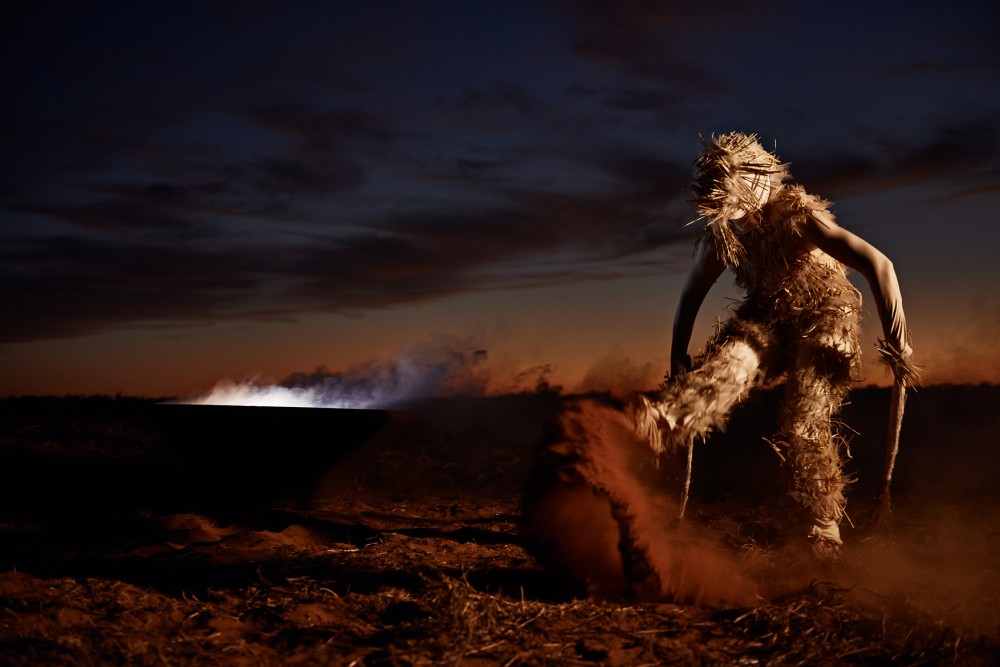
Jill Orr’s work centres on issues of the psycho- social and environmental where she draws on land and identities as they are shaped in, on and with the environment be it country or urban locales.
Link to Jill Orr’s website
Julie Rrap’s involvement with body art and performance in the mid-70s in Australia continued to influence her practice as it expanded into photography, painting, sculpture and video in an on-going project concerned with representations of the body.

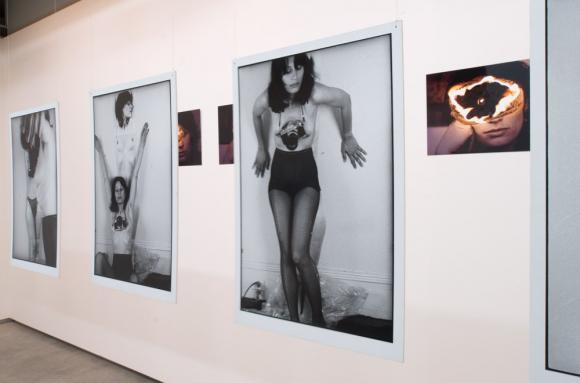
Link to Rrap’s website
Another site of influence to Clare Rae is Francesca Woodman. At the age of thirteen Francesca Woodman took her first self-portrait. From then, up until her untimely death in 1981, aged just 22, she produced an extraordinary body of work. Comprising some 800 photographs, Woodman’s oeuvre is acclaimed for its singularity of style and range of innovative techniques. From the beginning, her body was both the subject and object in her work.
Here is an article in the Guardian https://www.theguardian.com/artanddesign/2014/aug/31/searching-for-the-real-francesca-woodman
British Journal of Photography http://www.bjp-online.com/2016/01/on-being-an-angel-francesca-woodman-foam-amsterdam/
For those interested in exploring identities, stereotypes, gender, alter-egos through self-portraiture using varies techniques such slow shutters-speeds, use of dressing up, make-up, props, masks, locations (mine-en-scene) Often these images are questioning ideas around truth, fantasy or fiction an involve artists making images in both interior and exterior environments
Juno Calypso won the recent BJP International Award 2016 and is currently exhibiting in London at TJ Boulting Gallery. It was an old picture of a lurid pink bathroom that inspired London-born photographer Juno Calypso to spend a week honeymooning solo at a Pennsylvania love hotel. “My first thought was that I’d be out of my mind to go all that way to take some pictures, but after failing to find anything similar in Europe I knew I’d be even crazier not to go,” Calypso says.


Surrounded by heart-shaped tubs, sparkling mirror lights and her signature anachronistic beauty devices, the Penn Hills Resort became the setting of The Honeymoon, Calypso’s new series of photographs exploring the absurdities of female identity and sexuality.
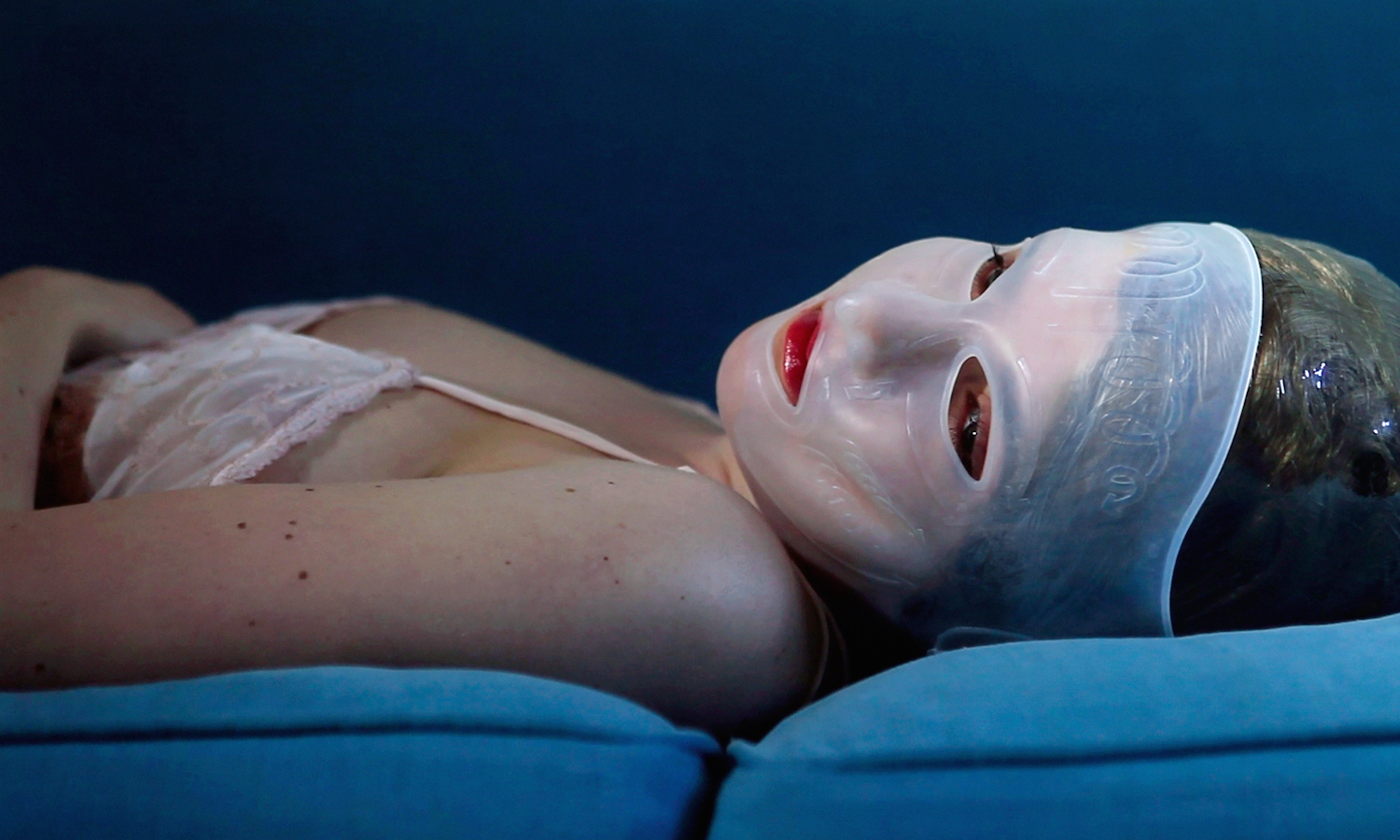

Read article here and also this article on artists exploring their alter-egos and inner selves in photography.
Anne Hardy’s photographs picture depopulated rooms that suggest surreal fictions. Working in her studio, Hardy builds each of her sets entirely from scratch; a labour-intensive process of constructing an empty room, then developing its interior down to the most minute detail. Using the transient nature of photography, Hardy’s images withhold the actual experience of her environments, allowing our relationship with them to be in our imagination.




Tableaux Photography and Staged environments.
Tableaux photography always have an element of performing for the camera. See artists such as, Tom Hunter, Jeff Wall, Gregory Crewdson, Duane Michaels, Sam Taylor Johnson (former Sam Taylor-Wood), Hannah Starkey, Tracy Moffatt, Vibeke Tandberg






Performance and Photography
For those of you who would like to explore Performance and Photography further here is a link to a project we did in 2015 when Tom Pope, was in Jersey as the Archisle Artist-in-Residence.
Study the blog posts below when we were exploring Pope’s practice and the themes of Chance, Change and Challenge . You should be able to find some starting points here.
Here are some of the key concepts that underpin Pope’s work and practice:
Performance, Photography, Chance, Humour/Fun, Repetition, Play
Psychogeography, dérive (drifting), Situationism (link to a ppt: Situationism), Dadaism, Public/Private, Challenging authority, Failure, DIY/Ad-hoc approach, Collaboration, Audience participation
For example, write a manifesto with a set of rules (6-10) that provide a framework for your performance related project. Describe in detail how you are planning on developing your work and ideas. Think about what you want to achieve, what you want to communicate, how your ideas relate to the theme ENVIRONMENT and how you are going to approach this task in terms of form, technique and subject-matter.
A list of art movements that you may use as contextual research. Many of them also produced Manifestos:
Dadaism, Futurism, Surrealism, Situationism, Neo-dadaism, Land/Environmental art, Performance art/Live art, Conceptualism, Experimental filmmaking/ Avant-garde cinema (those studying Media make links with your unit on Experimental film)
Here are a list of artists/ photographers that may inspire you:
Vito Acconci, John Baldessari, Yves Klein, Bas Jan Ader, Erwin Wurm, Chris Arnatt, Richard Long, Hamish Fulton, Joseph Beuys, Chris Burden, Francis Alÿs, , Sophie Calle , Nikki S Lee, Claude Cahun, Dennis Oppenheim, Bruce Nauman, Allan Kaprow, Mark Wallinger, Gillian Wearing, Marcel Duchamp and the Readymade, Andy Warhol’s film work, Steve McQueen, Sam Taylor-Johnson, Marina Abramovic, Pipilotti Rist, Luis Bunuel/ Salvatore Dali: , Le Chien Andalou, Dziga Vertov: The Man with a Movie Camera
Artist reference- Andy Goldsworthy
After researching the concept of ‘Environmental art’ as a movement I have decided to analyse the work of one specific artist associated with it-Andy Goldsworthy. He is a British sculptor and photographer who was inspired by Robert Smithson and other artists from the 1960s and 1970s.
“I enjoy the freedom of just using my hands and “found” tools–a sharp stone, the quill of a feather, thorns. I take the opportunities each day offers: if it is snowing, I work with snow, at leaf-fall it will be with leaves; a blown-over tree becomes a source of twigs and branches. I stop at a place or pick up a material because I feel that there is something to be discovered. Here is where I can learn.”-Andy Goldsworthy
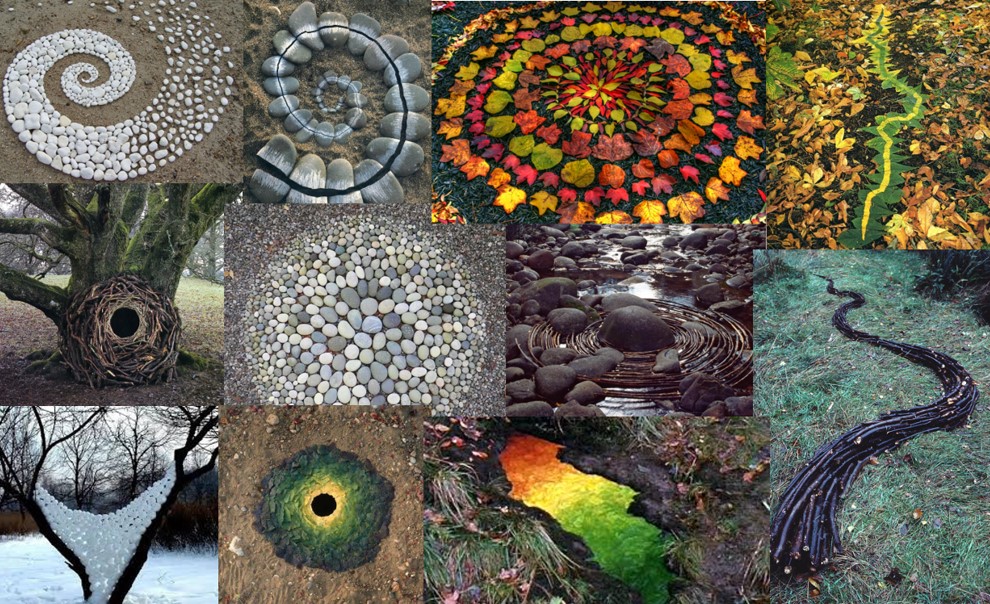
Goldsworthy crafts his artwork out of natural materials such as rocks, ice, or branches. Aware that the landscape will change he documents the resulting interventions with the land and exhibits them through his photographic prints. His art is not constructed with longevity in mind, “It’s not about art, It’s just about life and the need to understand that a lot of things in life do not last”. This shows how crucial a role photography plays in his art as it freezes the moment in time when his art is most alive“Each work grows, stays, decays – integral parts of a cycle which the photograph shows at its heights, marking the moment when the work is most alive. There is an intensity about a work at its peak that I hope is expressed in the image”. His photographs have an indexical relationship to the sculptures that they record and Goldsworthy prefers to use maximum depth of field in his images to focus on the surrounding environments and not always the artworks themselves. He also brackets his exposures, shooting a number of different exposures sequentially as well as normally taking a close-up shot, in which the work is centrally framed, and a shot showing the work in its immediate context.
His work has been criticised by some as being ‘Childish’ and ‘Naive’ and originally he didn’t like his work being labelled this way but since having children himself he says that he has seen ‘how intensely a child looks at things, you really can’t describe that looking as naive. My work is childlike in the sense that I am never satisfied to look at something and say that is just a pond or a tree or whatever. I want to touch it, get under the skin of it somehow, try and work out exactly what it is’.
In his early life Goldsworhty worked on farms as a labourer and he has compared the repetitive quality of farm tasks to the routine of making sculptures and methodically photographing them. He has also said that is is the land around his home that is the most important to him and it’s that landscape that he keeps returning to because it’s the place where he can learn the most about the landscape and his relationship to it.
Goldsworthy’s outdoor,ephemeral artworks are mostly made in private or remote circumstances but they are made ‘public’ through his photographs which are framed for exhibition or published in books. The public’s ability to access and experience Goldsworthy’s sculptures is influenced by the artist’s decision as to which works are printed or published, and by limits of the still photograph in determining how those works are ‘viewed.’

He often only uses found tools or his bare hands for creating the art which relates to the idea of working directly within the land and the tools vary depending on where he is. For example he talks about how he likes using dry slate to draw on other pieces of slate so that it’s not just drawn on but drawn out of the slate.

As well as the deeper meanings of Goldsworthy’s work his art is also visually appealing with his use of colour, shapes and patterns. For example the two images above stood out to me as impressive because they are both similar in appearance but are produced from different materials found in different environments. Similarly both are round in shape with a hole in the middle. This could relate to the idea of the ‘circle of life’ and decay that occurs in nature. The black hole in the centre acts as a focal point and breaks up the appearance of a solid structure. The black hole is a recurring form in his work and to me this has a slightly mysterious quality and creates links to the form and shape of an eye with a dark pupil looking at the viewer. Goldsworthy has said that he began using this after he had been digging in a sand dune and the ceiling collapsed in. When he crawled out it left a small hole in the sand which he thought of as a window into the ground and the material.
The use of colour in the structures above have been created out of different shades of the same material. This process of finding the right stones and leaves as well as separating out the colours would have been time consuming and shows the work and time he has spent on creating these pieces which won’t physically last for very long. The lighter colours in the centres contrast with the dark circles in the middle and progress to the darker border which seem to frame the structures. One of the reasons I was drawn to Goldsworthy’s work in particular was that unlike some Earth artists he doesn’t always interfere hugely with the land using machinery such as diggers to move vast amounts of material for creating wide scale interventions with the land. In the case of these two images he has used materials that are naturally found on the ground and has only created order out of the usual randomness in which they would be placed. This is pleasing to see because of the human desire to see patterns in things and create order to make sense of the world. They challenge the viewer’s perception about the natural and the unnatural.
I haven’t yet decided the exact direction that my project is going to take or how I will combine my ideas. However I am interested in Earth art because it’s a more unusual approach to exploring environments and focusing on the smaller details that make up landscapes. I also like the idea of using techniques that reflect primitive art which could be interesting to explore with the idea of reconnecting to the land etc. I am also intrigued by the unique relationship of photography for recording ephemeral art designs and it also links to the idea of sculpture which is something I haven’t looked at before. I may be able to incorporate these ideas into my wider project but perhaps not too heavily as it could be difficult and time consuming to get good results.
Environmental art historical context
Environmental art as a movement includes a range of artistic practices such as historical approaches to nature as well as new politically motivated works which explore the deeper relationships to environmental systems and social concerns. The physical environment has always inspired art, for example it could be said that it began with Palaeolithic cave paintings which represented aspects of nature such as animals and humans interacting with them.

Environmental art is an umbrella term which encompasses many different art styles , techniques and objectives. The artists associated with it often share similar beliefs about human interconnectedness to the natural world-socially, economically or spiritually. Environmental art contains a variety of sub movements including romanticism in the way that it seeks to celebrate the beauty and greatness of nature and the people connected to it as well as Eco-realism and Gaga art.

The growth of environmental art as a specific movement began around the late 1960’s and early on it was associated predominantly with sculpture and land art. It partly arose out of criticisms that sculpture was out of harmony with the environment. In 1968 Robert Smithson organised an exhibition in New York titled “Earthworks” which challenged conventional ideas to do with exhibitions because his artwork was too large to be collected. They were represented by photographs which emphasised the resistance to acquisition .

Earth art uses the natural landscape to create structures, forms and sculptures and it grew from ideas associated with conceptualism and minimalism. These were popular during the 1960’s when artists began to abandon traditional approaches and new ways of engaging with the world through art. There was a change from representing nature in art to utilising it as a material which has connections to primitive artists who used the natural materials available to them. Although some artists such as Smithson used mechanical earth-moving equipment to make their artworks, other artists made minimal and temporary interventions in the landscape such as Richard Long who simply walked up and down until he had made a mark in the earth.
The system of presenting art went through radical change as the Book ‘The representation of nature in art’ explains, artists reject the “traditional workshop-museum-gallery circuit”. It goes on to say that Land artists are grouped together by their desire to “work on the spot so that they can leave their mark, in one way or other, on whatever scale, and for however long, without deciding in advance how their works are to be accessed. They use photographs, film, maps and drawings to describe their work, which usually remains inaccessible… these artists use nature, not to reveal its beauty and evoke emotions but rather to dig, mark, plot, and transform. In this way the sculptural dimension emerges”. It is explained that Land art is “more the result of different intellectual, sociological and artistic paths than an aesthetic manifesto. The only thing the paths have in common is their medium: nature.”

By using the most basic materials Earth artists aim to get as close to the essence of their work as possible. The often ephemeral nature of their work means that they accept the inevitability of their work disappearing which means the role of photography in recording it is very important. I find this connection between art, sculpture and photography interesting as well as the way that it is reflective of very primitive methods of creating art but utilises new technologies to record it.
First Shoot Specification
My first shoot will be situated in two places: Victoria Avenue Beach and People’s Park. I chose these places to start as they are not the most beautiful places in Jersey, however i can make them look pretty using angles and colours. These places will be my experiment areas but if they turn out well then i will use them in my project.
I will be doing this shoot on Sunday Afternoon (19th March), I will be using my my friend Hannah as a model and she will be wearing normal clothes to make the photo seem as normal as possible. The first image will be in colour and it will be vivid. The second image will be the same pose and environment but she will be wearing a mouth and nose mask similar to the ones the Chinese wear during days of dangerous levels of pollution.
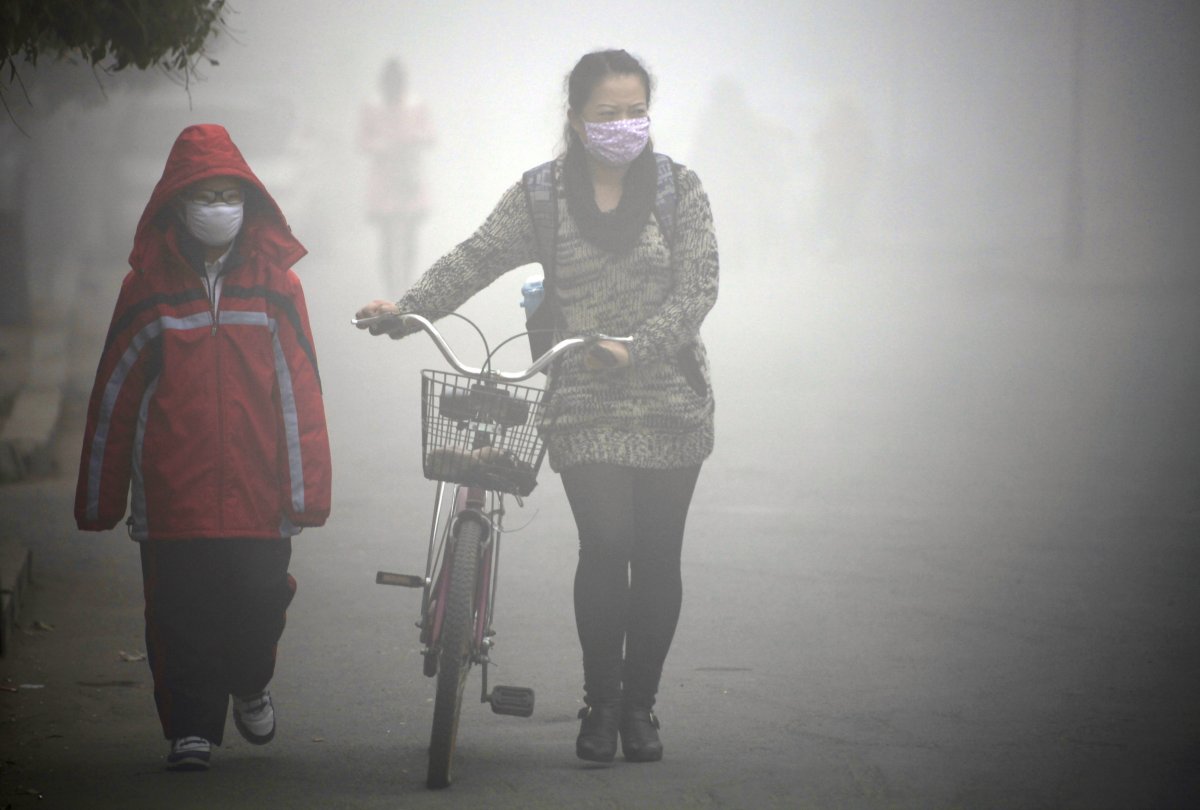
The second photo will be in black and white but it will be soft greys more than sharp and dark black and white. This is to mimic the effects of Smog which can be seen above. The third photo will be the same pose and environment again but this time, my model will be wearing a full face gas mask which has been lent to me by a friend and this time the image will be a very dark black and white, with high contrast and sharp focus.

Victoria Avenue:
- The model will be sat on rocks or leaning against the sea wall or rocks, this is to make it seem less staged.
- I will be using my Nikon D3200 and i will adjust the settings to suit the environment each time.
- The model will be wearing her normal clothes but the masks will change.
- I will edit the photos in Lightroom or Photoshop after the shoot.
- I may also try shoot the second and third images in black and white directly then adjust them in Photoshop.
- I am hoping that the weather will either be sunny and cloudy, preferably both as it will give me different atmospheres for my photos.
- If it is raining, i will use this to my advantage and make my model seem like she is raining to try get away from Acid Rain.
- I will place her as close to the water as possible as water always seems to make photos much more interesting.
People’s Park:
- I will position my model most likely on benches or on the hills, i may also make some eery photos using the playground, this will add variation to my work.
- I will be using my Nikon D3200 and i will have to change the settings due to the different colours and lighting.
- I do not think that this will be as interesting as the shoot from Victoria Avenue as i do not think that the environment is as interesting because it is ever changing.
- I think i will do this shoot first as practice and if i do get some images i like i will keep them.
New idea:
I think i will also take some images of my model just simply in the gas mask and only photograph the head and shoulders against the sky. I will then Photoshop Smog into the background to make it similar to a photograph taken by Alex Hofford of an activist protesting against the high levels of pollution in Hong Kong.
